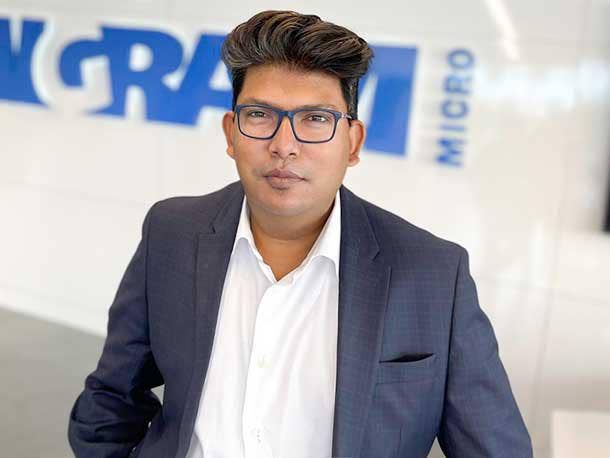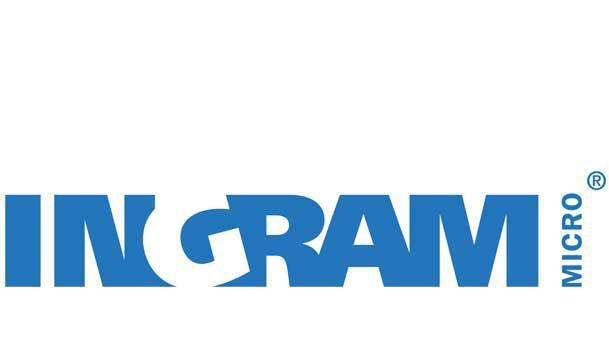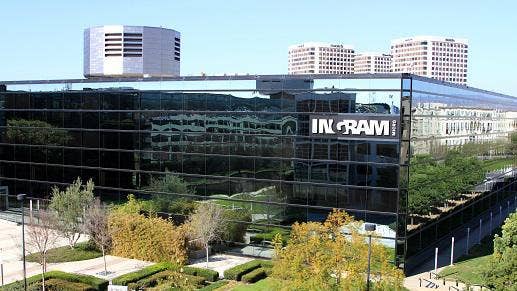Ingram Micro EVP Sanjib Sahoo: Xvantage Digital Twin ‘An Ecosystem,’ ‘Not Just A Website’
“It’s really like having a $54 billion company backing these partners up to actually advance their business, making them better, profitable, create and capture value,” Ingram Micro Exec Sanjib Sahoo tells CRN in an interview.

Ingram Micro’s upcoming Xvantage platform is more than a new web portal for customers – it brings together machine learning, artificial intelligence and data dissection to tailor its experience to customers based on their business needs and the vendors they work with, Sanjib Sahoo, Ingram Micro’s executive vice president and global chief digital officer, told CRN in an interview.
The “digital twin” of Ingram Micro, which draws on data from Ingram Micro’s 43 years of existence, will launch in the summer for customers in the U.S. and Germany, with rolling access to other geographies this year and into 2023, Sahoo said. The Irvine, Calif.-based distributor previewed Xvantage this week during its Cloud Summit 2022 event held in person in Miami Beach.
“It’s really like having a $54 billion company backing these partners up to actually advance their business, making them better, profitable, create and capture value,” Sahoo said. Xvantage is “not like a website or an e-commerce (platform). And why do I say that? To say that is because it’s a platform for our partners, employees, vendors, everyone. It’s an ecosystem.”
[RELATED: Ingram Micro Unveils Digital Transformation Initiative, Hires Amazon, Facebook Talent]
Unlike major vendor events held during the COVID-19 pandemic, which were online only or featured an online component, Ingram Micro held its summit only in person without any sessions streaming online.
Sahoo joined Ingram Micro last year and formed a Global Digital Solutions organization to oversee the distributor’s digital transformation initiatives, even recruiting big names from Amazon and Facebook to figure out how to improve the experience for Ingram Micro’s partner business customers.
“The approach is – create that same platform experience and product experience as we do for hardware, software, subscription, everything, in the platform,” Sahoo said.
The new platform comes during a period of major change for how a variety of vendors work with their partners. Microsoft, for example, has unveiled its “new commerce experience” and rolled out sweeping changes for partners, including reducing the number of sales motions from 20-plus to three and announcing plans to retire its gold and silver rankings for partners, replacing them with six designations.
Distributors such as Ingram Micro have played a major role thus far in helping Microsoft partners adapt to the sweeping partner program changes this year.
Amazon Web Services, in another example, has retired its consulting and technology partner types and introduced five paths for partners to streamline the program, simplify engagement and expand partner access to benefits.
Here’s what else Sahoo had to say about Xvantage.

Tell me about the Xvantage platform.
Xvantage, it is our digital experience, platform ecosystem. It’s a very different concept. It’s not like a website or an e-commerce (platform). And why do I say that? To say that is because it’s a platform for our partners, employees, vendors, everyone.
It’s an ecosystem, which means it is not just a web (portal). It is powered by many, many engines and behind with logic. Those are powered by all our data that we have for so many years and applies machine learning, AI and really dissecting that data.
And it’s also an experience that is very persona-driven. So based on the partner, a partner can have a different experience and others based on their needs and customized on that.
And also it is a single pane of glass, meaning instead of going through disjointed or other experiences, you can actually do something in one, single pane – everything that you want to do. And customize it, work with it, easy to use. And that’s why we call it the ‘digital twin.’
And why is it, apart from the platform, why is it a ‘digital twin’? Because this platform will allow us to digitize much of what the industry does in manual today.
For example, we have time consumed in managing multiple subscription contracts, disconnected quotes, ordering invoicing processes, addressing billing invoices, tracking all the things that we do. But if you can use that data and technology to actually do that … then it’s a different experience.
Now we don’t stop with that. I’ll tell you what this platform is a little more. So, we talked about the digital twin, it is completely an experience platform. In modern industry, companies have gone on to become an experience-driven organization. So we call it a customer experience platform, which is Xvantage for partners, employee associates.
The single pane of glass is not just visibility. It will allow the partners to connect, collaborate, learn, manage products, services, software, cloud – everything, together.
And it is powered by – I talked about all the engines and data coming.
But a few differences – No. 1, we’re using this data to learn and push recommendations to the partners. For example, you bought this, or based on their buying behavior or what they’re interested in, how the technology is changing. We can actually predict and push recommendations so that they have much more education to actually do that.
This platform has content, so we are going to also look at aggregated content and then provide insights from that content in a meaningful way so that the partners find it useful to actually operate. Because otherwise they’ll go (to) multiple pages to get content and education, because technology changes every day. … So it’s really like having a $54 billion company backing these partners up to actually advance their business, making them better, profitable, create and capture value.
That is what this platform is about. It’s not just a website, going e-commerce, and in and out. It’s about creating the experience, the single pane of glass, and doing that. … We have used our CloudBlue technology to facilitate this as well – to move faster.
So the Cloud Marketplace will be integrated to this platform. So basically, that’s the way over time, we’re going to have one single interface for the customers.
Now, we are launching this platform in summer, this summer, in (the) U.S. and Germany. And then rolling out to all other geographies in 2022 and 2023. That’s the way we are approaching it.
But the way we’re working on it is we are taking a very agile approach. So we are talking to partners, taking feedback …, and iterating fast in two weeks cycles after we launch in summer to make sure that we learn and grow, learn and grow. … It’s a very, very iterative way to actually build this platform.
But the platform, the differentiating aspects are as I said – the machine learning, the AI. It is also a self-learning platform, so our intent is as the partners, employees, interact with the platform, automatically our platform will learn and be better and better and better. And that’s how the machine learning works.
Basically, this is our complete goal – to give our partners a new way to actually do business with us. This is a transformational platform that actually creates a digital twin for us.
That is what Xvantage is about. It is truly creating a digital twin of Ingram Micro.

Does calling it a ‘digital twin’ come from your previous role as XPO Logistics chief information officer of transport?
I have done it in two industries … financial, logistics. I didn’t come from distribution. So I came from totally out.
And you look at it – so there is a traditional company and there is digital native. So this is trying to create digital twins. Slowly, that twin can mimic what you do in a much better, efficient way. And that’s the transform(ation). That’s my goal. It’s not a platform, tool here. It is not a tool. It is a twin, which means how we operate and serve our partners better is through this.
The platform should accommodate partners who work with software and hardware?
The challenge is about harmonizing that data and the logic in the backend. But then once you do that, then you can actually create a frictionless experience at the experience layer.
The complexity comes … not about how you do the front end and how the experience is. It’s about – how do you renew your subscriptions in a software? How do you actually manage those contracts? Versus the hardware – to track hardware is more important … to track where it’s going.
So if you harmonize all the experience – and then what happens is it gets all the data, then it helps you take complexity out. And then you can actually create a frictionless experience.
So the idea is that the global data is really helping us to create these engines, which is harmonizing it. And then what we do is we stitch them together, the logic, to create a frictionless experience. That’s where you can manage a product versus a subscription, all in a single pane.

Your platform is ready to deal with individual vendors’ marketplaces and partner program changes?
This is a platform ecosystem and with multiple access points to the platform – both from the partner side, vendor side, employee side.
It can be data, it can be API (application programming interface), it can even be your Alexa, like how you get a notification. There are different ways to interact.
What it does is – even if you have disparate rules – our goal is to take those rules and harmonize them. And again, I’m not saying it will be perfect on day one. But how you constantly work to create the experience and do that. … Here, we started with the partner experience and then reverse engineered it.
So figure out what the partners want – these partners today in the industry want a single experience, want (less) complexity, want some of these manual things to be more automated, want information, analytics, insights. So start there.
And when you start with an experience, and figure out, ‘How do you take complexity out through the data?’ And then stitch them together – that’s been our approach. It can be rules. It can be disparate data. It can be heterogeneous ways of interaction. That is the whole concept.
How will the rollout work?
When we launch in summer, we will first launch it to some partners. We have been involving some partners already and under NDA (non-disclosure agreement) – giving them demos to make sure how things are working – to launch some partners.
And then once we are comfortable … we will open it up to all our partners in this country. And then they will go to other geographies. It’s a constant, agile, incremental process.
And then when we do that … let’s say we get feedback, like, ‘Hey, we don’t like this.’ Or, ‘This is better.’
We take the feedback and can easily improve it (the platform). So we have been working on the systems to make sure we can be nimble. So we take the feedback and iterate over it.
It’s a different way of building software where we can actually be more incremental, iterative. And I always (say) that Apple did not invent the phone, they made a better phone. So we will improve over time. We learn over time, and do that. … Our goal is to wow our partners with experience and delight them.

Did you look to other platforms out there for inspiration?
We have great respect for our competition. … But what I feel is that our competition should be our own selves and how we can actually disrupt our own selves to be better.
Now, the platform is themed toward a lot of modern platforms and experiences that you see outside of the industry because the idea is to create a blend of outside-in technology expertise – versus inside-out for people who know distribution – and mash them together. … We have brought in some talent also recently from Amazon (Ajay Agarwal, Ingram’s new chief product and platform officer, and Zlatan Dzinic, Ingram’s executive director of enterprise and solutions architecture,) and Facebook (Mukund Gopalan, Ingram’s chief data officer). And we have some good talent in the company in CloudBlue. Then people in the company, they know distribution. … So I don’t say it is generally inspired by the distribution experience. It is inspired by what the partners want. Listening to the partners.
Is there any part of Ingram’s business that can’t have a ‘digital twin’?
So it’s actually not always true that you can actually day one approach, automate everything. … When we are approaching a digital transformation – a digital twin, I call it – you first have to have the spirit that everybody’s behind the plan … an actual plan, not like a nebulous plan. … How do you architect the solutions to actually scale? … Governance, because there’s always temptation to do everything in one shot.
But the real thing is – isolate the use cases in a way that creates momentum and adds value and creates partner confidence and slowly, slowly engage them more.
That’s to do better than actually create, do everything – which I call it ‘inch wide, feet deep, is better than feet wide, inch deep.’ … Today we create a new experience, now slowly we add more and more capability.
So once they start seeing that and they get confidence, we do that. Now, there will be some things which we may not be able to do. But let’s focus on the things that we start working on at launch. And I’m a great believer in more of a feedback loop … where (we’re) taking the partners feedback together and building rather than just building in vacuum for a few years and then launching. So that’s the way we are approaching it.
It will obviously take some time to adjust the behavior and how they get more confidence, and it’s always natural. For example, I don’t expect initially everybody will be dropping everything. … But that’s why we are launching summer and we adjust, adopt, learn and move.

Will it be difficult for the platform to handle individual vendor changes?
All the complexities, the key is data. If we can handle data well and we can actually leverage machine learning and AI – we just a few months ago hired our chief data officer (Mukund Gopalan) from Facebook.
And one of the goals that I gave him is to actually really focus on creating data, taking transformation of data, really focusing on personalized behavior for the partners through machine learning and AI. That’s how a platform can succeed. Platform’s do not succeed if you just come in and out and transact. We need to move from a transaction to an interaction.
And that’s where experience comes in. And data and the UX (user experience) helps to enrich that experience. That’s when you make stickiness in the behavior of the partners.
Anything else you’d like to say about Xvantage?
Apart from the platform, I think the way we are looking at it, this is actually a way for us to really give back to our partners – an ability to create and capture value. Really becoming a true partner for our partners. It’s bringing solutions, making their lives easier. Really having, as I said, a $54 billion company behind them to strengthen how they do business. That’s what we are trying to achieve.
So you can look at it as a digital platform. But the idea is, how can we take what you’ve learned in this industry and take the complexity out. And automation is one thing, but how can we really make the experience more closer to the experience that people see today.